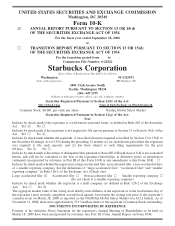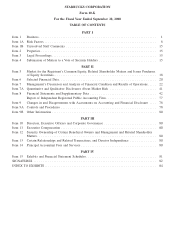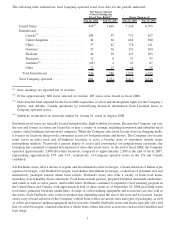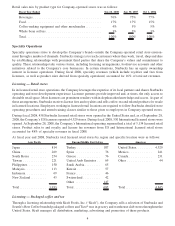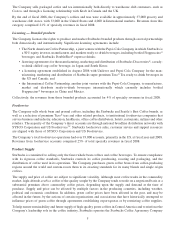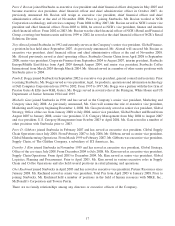Starbucks 2008 Annual Report Download - page 15
Download and view the complete annual report
Please find page 15 of the 2008 Starbucks annual report below. You can navigate through the pages in the report by either clicking on the pages listed below, or by using the keyword search tool below to find specific information within the annual report.•The Company may not be successful in implementing important new strategic initiatives, which may have
a material adverse impact on its business and financial results.
In fiscal 2008, the Company undertook the development and implementation of several important strategic
initiatives as part of a transformation strategy designed to drive long-term shareholder value and improve Starbucks
results of operations, including:
• improving the current state of the US business by refocusing on the customer experience in the stores, new
products and store design elements, and new training and tools for the Company’s store partners to help them
give customers a superior experience;
• slowing the Company’s pace of US store openings and closing a number of underperforming US store
locations, enabling Starbucks to renew its focus on its store-level unit economics;
• re-igniting the emotional attachment with customers and restoring the connections customers have with
Starbucks»coffee, brand, people and stores; and
• re-aligning Starbucks organization and streamlining the management to better support customer-focused
initiatives and reallocating resources to key value drivers.
There can be no assurance that the Company will be able to successfully implement its new strategic initiatives or
that its transformation plan will result in improved results of operations. If the Company does not successfully
implement its new strategic initiatives, or if its transformation plan does not achieve its intended results, the
Company may experience a material adverse impact on its business and financial results.
•Starbucks is subject to a number of significant risks that might cause the Company’s actual results to vary
materially from its forecasts, targets, plans, or projections, including:
• lower customer traffic or average value per transaction, which negatively impacts comparable store sales, net
revenues, operating income, operating margins and earnings per share, due to:
• the impact of initiatives by competitors and increased competition generally;
• lack of customer acceptance of new products or price increases necessary to cover costs of new products
and/or higher input costs;
• unfavorable general economic conditions in the markets in which Starbucks operates, including, but not
limited to, downturns in the housing market, higher interest rates, higher unemployment rates, lower
disposable income due to higher energy or other consumer costs, lower consumer confidence, and other
events or factors that adversely affect consumer spending, including the ongoing global financial crises;
• customers trading down to lower priced products within Starbucks, and/or shifting to competitors with
lower priced products;
• declines in general consumer demand for specialty coffee products; or
• adverse impacts due to negative publicity regarding the Company’s business practices or the health effects
of consuming its products;
• cost increases that are either wholly or partially beyond the Company’s control, such as:
• commodity costs for commodities that cannot be effectively hedged, such as fluid milk, and to a lesser
extent, high- quality arabica coffee (See also the discussion on page 6 under “Product Supply”);
• labor costs such as increased health care costs, general market wage levels and worker’s compensation
insurance costs;
• litigation against Starbucks, particularly class action litigation;
• construction costs associated with new store openings;
9


